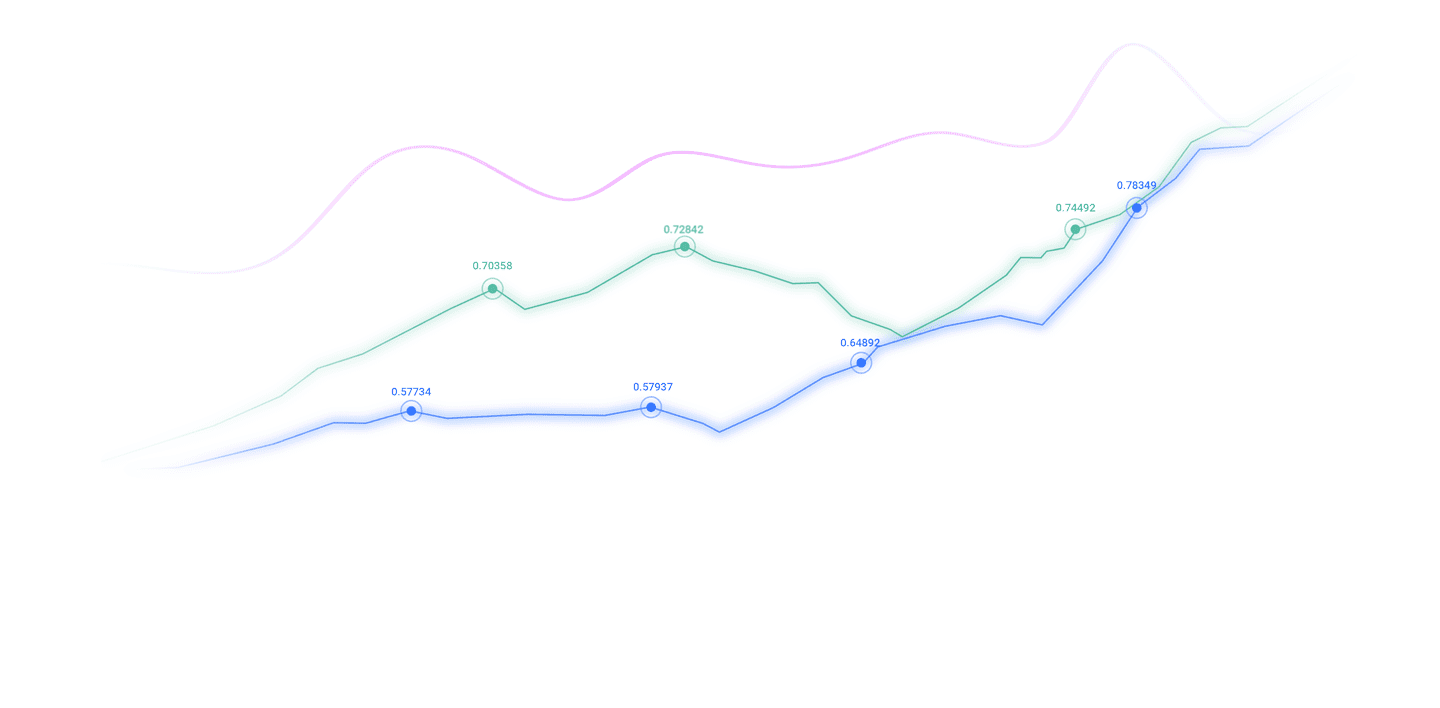Trusted by over 15 Million Traders
The Most Awarded Broker
for a Reason
CATEGORIES
market analysis
Without hawkish re-pricing, is it difficult for the dollar to go far?
Wonderful introduction:
Life is full of dangers and traps, but I will never be afraid anymore. I will remember it forever. Be a strong person. Let "Strength" set sail for me and accompany me to the other side of life forever.
Hello everyone, today XM Forex will bring you "[XM Foreign Exchange Official Website]: Without hawkish re-pricing, will the dollar go far?". Hope this helps you! The original content is as follows:
On Thursday (October 23), the U.S. dollar index continued to fluctuate around the 99 line during the European session. In the past more than a month, the US dollar first bottomed out near 96.2109 and then rebounded, then surged to 99.5549 and then fell back to consolidate; the earlier high was at 100.2599. The short-term has entered a critical time window, and a small deviation between data and policy expectations may determine whether the 99 line is a "relay station" or a "terminal station."
Fundamentals
Conclusion: The previous rebound in the US dollar has been "weak", and if it wants to continue, a more hawkish repricing is needed. The market situation in the past few days is not bad, but it is not exciting either - there is limited new information to support the US dollar, and it is more about the digestion of existing expectations.
1) Inflation and the path of the Federal Reserve: The market’s mainstream expectation for tomorrow’s U.S. core CPI is still 0.3% month-on-month, which is within the “hot enough but not hot” range. If it is just in line with consensus expectations, it will be difficult to trigger a hawkish repricing of the Fed's path; and expectations for an interest rate cut of about 50 basis points during the year have already been written into the price. To lift the dollar higher again, hotter readings or tougher www.xmh100.communication are needed. On the contrary, once the data is slightly softer, the dollar's retracement space will be passively opened.
2) Volatility and carry environment: Foreign exchange volatility is significantly lower than the average of the past 12 months, which is a friendly environment for "carry trades". Under low volatility, the market is more willing to hold high-interest currency exposure; at the same time, the financing attribute of the Japanese yen is still there, and its weight in the US dollar index is not small. If the Japanese yen continues to be weak, it will indeed form a passive support for the US dollar index, but this kind of support is more like a "slow pull" and is difficult to replace the fundamental catalyst.
3) Energy and Sanctions Pulse: The latest round of sanctions against Russia pushed oil prices up by about 4% in the short term, but this is more of a negative impact on 1Compensating for the decline since October. Historical experience shows that the impact of similar news on the actual flow of Russian crude oil is often limited, and the market's first reaction is often excessive. In order for the foreign exchange market to perceive a more substantial re-pricing of inflation, Brent crude oil will most likely need to reach around $70 and stabilize, which will form a more "energetic" support for the US dollar. It’s still too early to talk about an “oil price-driven dollar reflation trade.”
To sum up, the short-term rise of the US dollar is more like "inertia + weight effect" rather than "logical rebirth". In the absence of catalyst, the rebound may turn into high consolidation at any time.
Technical aspect:
The daily chart shows that the Bollinger middle track is at 98.3065, the upper track is at 99.5634, and the lower track is at 97.0496. The current price is between the middle track and the upper track, indicating that the upward trend after the medium-term average has moved up is still there, but the upper edge space is not wide:
The resistance structure: first, the Bollinger upper track 99.5634, second, the previous high of 99.5549, and third, the higher upper limit of 100.2599. These three resistances are almost in the form of a "dense zone", and a slight disadvantage may trigger a false breakthrough and a retracement of the mid-track trend.
Support system: Dynamic support is based on the Bollinger middle track of 98.3065; if it falls below, the medium and short term will return to the mean reversion and point to the lower Bollinger track of 97.0496. The deeper static support is at the two stage lows of 96.3729/96.2109, which is a "trend goalkeeper".
MACD resonance: MACD(26,12,9) has a DIFF of 0.2630, a DEA of 0.2413, and a column value of 0.0435. It is still above the zero axis but the column is shortened. It is a typical "kinetic energy is positive but the margins are weakening". If the price hits the upper track again and the column fails to enlarge simultaneously, you need to be alert to the risk of top divergence.
RSI is moderately strong: RSI (14) is at 57.9610, which is in the neutral to strong area, but there is still room for it to be away from the traditional "overbought line". In conjunction with the Bollinger Bands, it can be interpreted as: going long is not crowded, but it is not about picking up losses at low levels.
The key technical signal is very direct: if the 99.56 area cannot be effectively broken through with volume, the market will most likely return to the 98.30-99.56 box for mean reversion; if the volume is firmly on the upper track and the backtest is not broken, the midline can hit the psychological mark of 100 and the trend continues above.
Outlook
Short-term (several days):
Bull path: If the core CPI is higher than 0.3%, or the items show a "sticky upward trend", and the Japanese yen is weak, the U.S. dollar index is expected to hit 99.5634 and try to move towards 100.2599. At that time, pay attention to whether the MACD histogram can be enlarged simultaneously. If not, it is easy to peak and fall after rising high.
Short path: If the CPI is less than expected or of "poor quality" (core services weaken), the dollar will fall back to the mid-track of 98.3065, and if it falls below, it will point to 97.0496.
Midline (several weeks):
Strong continuation scenario: twoResonance of factors - First, inflation or employment "elastically turn upward" again, forcing the market to take back part of the interest rate cut pricing; second, energy prices continue to rise, with Brent approaching and stabilizing US$70, driving up inflation expectations. Under this www.xmh100.combination, the U.S. dollar index is expected to build an upward channel, targeting the retracement zone in the 100-101 range.
Scenario of shock and fall: If the CPI data is "only 0.3%" step by step, and the overseas central banks do not cooperate with the "dove" approach, the advantage of the US dollar will relatively fall back, and the index will tend to move sideways in the range of 97-100. The upper edge will become increasingly difficult to break, and the lower edge will gradually rise to around 98.
The above content is all about "[XM Foreign Exchange Official Website]: Without hawks' re-pricing, will the U.S. dollar go far?" It was carefully www.xmh100.compiled and edited by the editor of XM Foreign Exchange. I hope it will be helpful to your trading! Thanks for the support!
Sharing is as simple as a gust of wind can bring refreshing, as pure as a flower can bring fragrance. Gradually my dusty heart opened up, and I understood that sharing is actually as simple as the technology.
Disclaimers: XM Group only provides execution services and access permissions for online trading platforms, and allows individuals to view and/or use the website or the content provided on the website, but has no intention of making any changes or extensions, nor will it change or extend its services and access permissions. All access and usage permissions will be subject to the following terms and conditions: (i) Terms and conditions; (ii) Risk warning; And (iii) a complete disclaimer. Please note that all information provided on the website is for general informational purposes only. In addition, the content of all XM online trading platforms does not constitute, and cannot be used for any unauthorized financial market trading invitations and/or invitations. Financial market transactions pose significant risks to your investment capital.
All materials published on online trading platforms are only intended for educational/informational purposes and do not include or should be considered for financial, investment tax, or trading related consulting and advice, or transaction price records, or any financial product or non invitation related trading offers or invitations.
All content provided by XM and third-party suppliers on this website, including opinions, news, research, analysis, prices, other information, and third-party website links, remains unchanged and is provided as general market commentary rather than investment advice. All materials published on online trading platforms are only for educational/informational purposes and do not include or should be considered as applicable to financial, investment tax, or trading related advice and recommendations, or transaction price records, or any financial product or non invitation related financial offers or invitations. Please ensure that you have read and fully understood the information on XM's non independent investment research tips and risk warnings. For more details, please click here


































































































